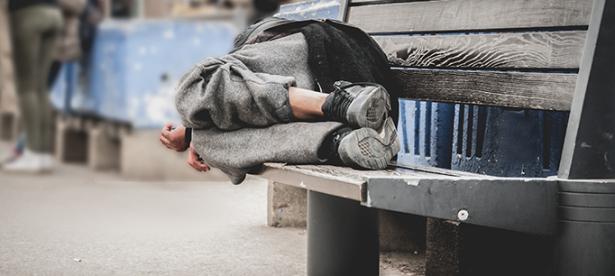Persistently high housing costs and the end of pandemic-era relief programs have fueled a sharp increase in homelessness in the U.S. this year, according to an analysis published Monday by The Wall Street Journal.
The Journal reported that homelessness nationwide—from Denver to New Orleans to New York City—is up 11% so far this year compared to 2022, when more than 582,000 people experienced homelessness.
If this year's increase holds, the Journal noted, it would mark the largest jump since 2007, the year the U.S. government began tracking comparable data.
"We and others have repeatedly predicted this increase in homelessness," Diane Yentel, president and CEO of the National Low Income Housing Coalition (NLIHC), wrote in response to the new figures. "When rents skyrocket amidst a severe shortage of affordable housing and a shredded safety net, more people become homeless. It really is that simple—and preventable."
NLIHC observed in a June report that "during the pandemic, housing advocates and impacted people helped bring about the enactment of unprecedented policy measures, including $46 billion in emergency rental assistance (ERA) and a national eviction moratorium, that reduced suffering for millions of households."
"Additionally, economic impact payments, increases to unemployment insurance and Supplemental Nutrition Assistance Program (SNAP) benefits, and childcare tax credits helped keep low- and middle-income renters afloat," the report added. "Yet now that emergency resources are being depleted and many of these measures phased out, low-income renters are once again facing high rents and increased housing instability, with eviction filing rates reaching or surpassing pre-pandemic levels... and homelessness increasing in many communities."
"The Covid relief funds provided a buffer. We're seeing what happens when those resources aren't available."
As pandemic relief measures and renter protections faded in 2021 and last year, evictions surged and housing costs continued to rise across the country, with the median national rent surpassing $2,000 a month for the first time.
The Government Accountability Office has estimated that a $100 increase in the median U.S. rent is associated with a 9% increase in homelessness.
"The Covid relief funds provided a buffer," Donald Whitehead Jr., executive director at the National Coalition for the Homeless, told the Journal on Monday. "We're seeing what happens when those resources aren't available."
Data from the Department of Housing and Urban Development indicates that, in 2022, more than 138,000 people in the U.S. were chronically unhoused, meaning they were unhoused for a year or more or periodically unhoused over three years.
In a letter to the Federal Housing Finance Agency late last month, a group of more than 30 U.S. economists argued that federal rent control and stronger tenant protections are necessary to "meaningfully change the trajectory of the housing crisis."
"High rents and a lack of tenant protections negatively impact tenants and their families, as well as the larger economy," the economists wrote. "At the household level, high rents lead to housing insecurity, homelessness, health challenges, and economic precarity for already-struggling renters."
"At the national level," they added, "rent makes up about one-third of the Consumer Price Index, and rent increases have played a major role in the recent uptick in inflation and run the risk of posing long-term threats to the nation’s economy."
Jake Johnson is a staff writer for Common Dreams.


Spread the word